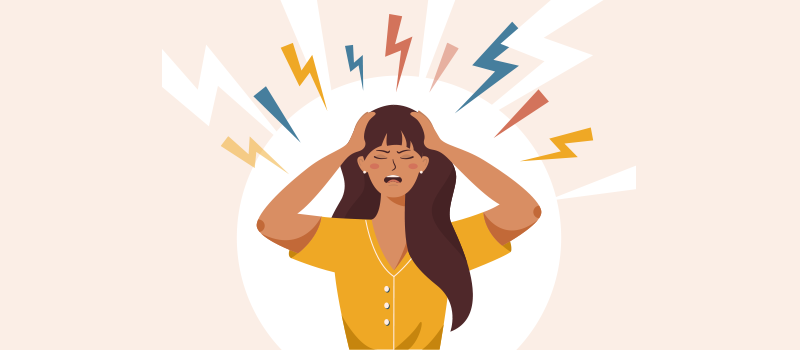Deviated Septum: How to Identify and Treat

The nasal septum is the thin wall of bone and cartilage between the two nostrils and nasal passages. A deviated septum occurs when the nasal septum is off-center, i.e., displaced to one or both sides. A mildly deviated septum does not typically cause any symptoms and does not require any treatment. However, a severely deviated septum can cause symptoms such as nasal obstruction, nasal congestion, sinus infections, and difficulty breathing, and it may need to be treated with a deviated septum surgery. Please continue reading to learn more about deviated septum symptoms and treatments.
What causes a deviated nasal septum?
A deviated nasal septum is a very common deformity and is present in up to 80% of people. However, most people have a mild degree of deviation, which is only identifiable by a trained medical professional and causes no symptoms.
Some people are born with a deviated septum. In others, a nose injury causes a deviated septum, such as a bump on the nose, contact sports, a car crash, a fall, or a physical altercation. Sometimes, the nasal septum becomes deformed and deviated with age.
What are the symptoms of a deviated septum?
A mildly deviated septum may cause no symptoms. On the other hand, a severely deviated septum can cause bothersome symptoms such as:
- Nasal blockage: A deviated septum can cause a blocked nostril on one or both sides. Chronic nasal congestion can make breathing through the nose difficult, especially if you have a cold or allergies and your nasal passages are swollen and narrowed.
- Nosebleeds: The dry surface of a deviated septum can increase the risk of nosebleeds.
- Noisy breathing during sleep: Many people with deviated septums have loud breathing or snoring during sleep due to the obstruction of airflow in the nasal passages.
- Preference for sleeping on one side: If your nasal passage is narrower on one side, you may subconsciously prefer to sleep on a particular side to make breathing easier.
- Awareness of the nasal cycle: The nasal cavity alternates between obstruction on one side and the other side. This is called the nasal cycle, and one is normally unaware of it. However, if you have a deviated septum, the nasal obstruction can make you aware of the nasal cycle.
- Chronic sinusitis: A deviated septum can affect normal sinus drainage and lead to frequent sinus infections.
- Dry mouth: Due to breathing difficulties through the nose, people with a deviated septum often breathe through their mouth, resulting in a dry mouth.
- Facial pain or headache: In severe cases, a deviated septum can cause pain on one side of the face or a headache.
- Crooked nose: A severely deviated septum can make the nose appear visibly crooked.
Can I check for a deviated septum by myself?
If you have nasal symptoms and suspect a deviated septum, you can do a simple test to check the flow of air through your nasal passage on each side. Close one of your nostrils with a finger and breathe in through the other one. Pay attention to how the air flows in and out of the nostril. Now, repeat on the other side and compare. If it feels like the airflow is blocked in one nasal passage, you may have a deviated septum.
You can also lean your head back and look in a mirror or take a photo of the underside of your nose. You may be able to see an obvious deviation of the thin wall between your nasal passages or a narrowing of one or both nostrils. However, only a healthcare professional can make a proper diagnosis.
How do you confirm you have a deviated septum?
Doctors can confirm you have a deviated septum on physical examination. The exam may include use of instruments such as a nasal speculum to widen your nostrils or a scope to look further back inside your nose. Your doctor may also examine your nasal structures before and after the application of a medicated spray. Your primary care provider can make a diagnosis of a deviated septum, or they may refer you to an ear, nose, and throat (ENT) physician.
How can a deviated septum be treated?
Deviated septum treatment consists of medications to manage the symptoms and surgery to correct a deviated septum.
Medications
- Decongestants: These medications help to open the nasal passages and relieve sinus conditions. They come in pill and nasal spray form. Overuse of decongestant nasal sprays can lead to dependency and worsening symptoms after discontinuation of use.
- Antihistamines: These medications help to control allergy symptoms such as a stuffy or runny nose. Antihistamines may, therefore, provide relief from the feeling of being “clogged,” which is common with a deviated septum. However, antihistamines can cause side effects such as drowsiness.
- Nasal steroid sprays: These are prescription nasal sprays that help to reduce swelling in the tissues lining the nasal cavities. They typically take 1-3 weeks to have maximum effect and should be used exactly as prescribed.
Surgery
If medications do not help in managing symptoms, or if the deviated septum is causing difficulty breathing, your doctor may recommend a surgical procedure to correct a deviated septum and optimize breathing. This procedure is called a septoplasty and involves straightening and repositioning the nasal septum by cutting or reshaping portions of the septum in the proper position to keep the nose open. Most people have significant improvement in symptoms after surgery.
A septoplasty can be done under local or general anesthesia and typically takes 1 to 1-½ hours to complete. Plastic surgeons can also perform a rhinoplasty (nose reconstructive surgery) along with a septoplasty.
Can you fix a deviated septum without surgery?
You cannot fix a deviated septum without surgery. Treatment options such as medications can help to reduce nasal tissue swelling and relieve the symptoms of a deviated septum. But if you are having breathing problems, you may require deviated septum surgery.
References:












SOCIAL